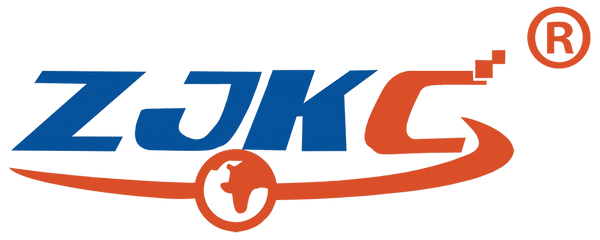Light therapy, also known as photobiomodulation (PBM) or low-level light therapy (LLLT), is a non-invasive, FDA-cleared technology that uses specific wavelengths of light to improve the health and appearance of the skin. Originally developed for NASA’s space programs to aid in wound healing, PBM has since become a staple in dermatology and cosmetic clinics. It is now widely recognized for its ability to stimulate skin cells, improve circulation, and treat conditions ranging from acne to signs of aging.
Different wavelengths (or colors) of light penetrate the skin at different depths and produce distinct biological effects. The most common types used for facial and skin treatments are:
- Red light (620–750 nm): Targets the dermis, boosts collagen, and accelerates healing.
- Near-infrared (NIR) light (750–1200 nm): Penetrates deeper into soft tissue and enhances blood flow.
- Blue light (400–495 nm): Remains near the surface and kills acne-causing bacteria.
- Amber/Yellow light (570–620 nm): Reduces redness, calms sensitive skin, and supports lymphatic drainage.
How It Works: The Biological Mechanisms
Light therapy works at the cellular level. Photons from LED light are absorbed by chromophores within the mitochondria—the energy-producing organelles in cells. This leads to an increase in adenosine triphosphate (ATP), the cellular fuel, which in turn enhances the cell’s ability to repair, regenerate, and function optimally. The following effects occur:
- Stimulation of fibroblasts: Promotes production of collagen and elastin, essential for firm, elastic skin.
- Angiogenesis: Formation of new blood vessels that improve oxygen and nutrient delivery.
- Anti-inflammatory response: Reduction in pro-inflammatory cytokines, helping calm redness and irritation.
- Modulation of oxidative stress: Increases antioxidant defenses and detoxification at the cellular level.
- Acceleration of wound healing: Enhances tissue granulation, re-epithelialization, and remodeling.
Effects by Wavelength and Clinical Use
Red Light (620–660 nm):
- Stimulates collagen and elastin production.
- Reduces fine lines, wrinkles, and signs of photoaging.
- Enhances skin tone and texture.
- Aids post-procedure recovery (e.g., laser, microneedling).
- Suitable for most skin types.
Blue Light (405–470 nm):
- Destroys acne-causing bacteria (Propionibacterium acnes).
- Prevents new breakouts by controlling sebum production.
- Effective in mild to moderate acne treatment protocols.
Yellow/Amber Light (570–620 nm):
- Calms redness, irritation, and sensitive skin reactions.
- Beneficial for rosacea, broken capillaries, and post-laser redness.
- Stimulates lymphatic system and detoxifies skin.
Near-Infrared Light (800–940 nm):
- Penetrates deeper layers, supporting muscle and joint health.
- Enhances microcirculation and oxygenation.
- Aids deep tissue healing and reduces swelling or inflammation.
- Often used in wound care and post-operative recovery.
Conditions Treated with Light Therapy
Phototherapy has been studied and applied to a wide range of dermatological and cosmetic concerns. Below is an overview of supported use cases:
|
Condition |
Recommended Wavelength |
Scientific Support |
|
Acne vulgaris |
Blue (415 nm), Red (633 nm) |
Strong, FDA-cleared |
|
Wrinkles/Fine lines |
Red (630–660 nm), NIR (830 nm) |
Strong clinical evidence |
|
Wound healing & Scars |
Red/NIR |
Widely validated |
|
Rosacea |
Amber, Red |
Moderate evidence |
|
Hyperpigmentation |
Red, Yellow |
Moderate evidence |
|
Skin laxity |
Red/NIR |
Emerging evidence |
|
Psoriasis/Eczema |
Red/NIR |
Moderate clinical benefit |
Treatment Protocols and Practical Use
Light therapy can be administered at home or in clinical settings. While in-office devices offer higher power output and more precise calibration, home-use LED panels and masks have become increasingly effective for daily maintenance.
Typical Parameters:
- Session Duration: 10–30 minutes per treatment.
- Frequency: 3–5 times per week for 4–8 weeks; maintenance 1–2 times per week.
- Fluence (Energy Density): 4–100 J/cm² depending on the target depth.
- Power Density (Irradiance): 10–200 mW/cm².
- Delivery Mode: Continuous or pulsed.
For best results, consistency and adherence to protocol are essential. Eye protection should be used during treatments, especially when targeting the face.
Scientific Literature and Clinical Trials
- A 2013 review by Avci et al. confirmed the anti-inflammatory, wound-healing, and anti-aging effects of LLLT across multiple studies.
- A 2014 clinical trial (Barolet & Boucher) demonstrated significant improvement in periorbital wrinkles using red and NIR light.
- A 2007 split-face study by Na et al. found statistically significant acne reduction using a combination of red and blue LEDs.
- A 2020 publication by Cyprien et al. validated the efficacy of home-use light therapy devices in improving skin texture and tone over 8 weeks.
- LED therapy is currently included in dermatologic guidelines for acne and post-procedural recovery, and increasingly studied in anti-aging.
Safety Profile and Contraindications
One of the key advantages of light therapy is its excellent safety profile. It does not emit UV radiation, which means it won't cause DNA damage, sunburn, or increase cancer risk. Most users tolerate it well.
Potential side effects:
- Temporary erythema (redness)
- Dryness or mild irritation
- Eye strain if unprotected
Precautions and contraindications:
- Photosensitive conditions (e.g., lupus, porphyria)
- Use of photosensitizing medications (e.g., isotretinoin)
- Pregnancy (consult with physician)
- Active skin cancers or suspicious lesions
- Seizure disorders (especially with pulsed light devices)
Always follow device guidelines and consult a professional if unsure.
Summary: Is Light Therapy Worth It?
Light therapy offers a compelling combination of safety, ease-of-use, and scientifically proven benefits. It is increasingly recognized as a valuable tool for anyone seeking healthier, more radiant skin without invasive procedures or downtime. Whether for acne, aging, rosacea, or skin repair, light therapy has earned its place in modern skincare routines and medical protocols.
Consistency and proper technique are key to results. With the growing availability of quality at-home LED devices and strong clinical backing, light therapy is not only effective but also accessible to the average user.
References and Suggested Reading
Avci P, Gupta A, Sadasivam M, et al. (2013). Low-level laser (light) therapy (LLLT) in skin.
GC et al. (2020). Clinical efficacy of home-use light-based anti-aging devices.





